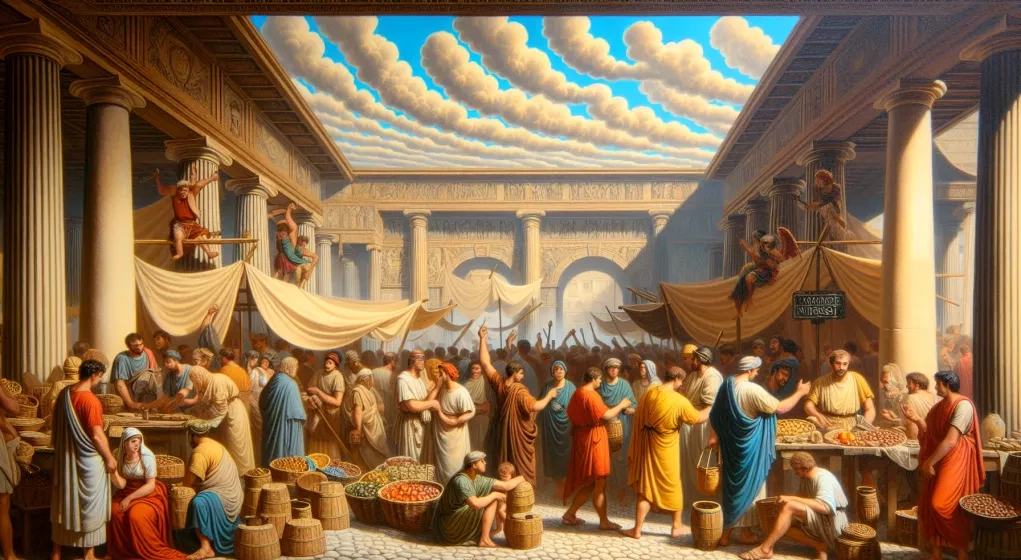Against the luminous backdrop of the storied Las Vegas Strip, Caesars Entertainment’s equity dance is catching myriad glances, its stock oscillating to the rhythms of the market with the grace and unpredictability of a high-stakes gambler. There’s a tangible tension in the air, as if every chip placed reverberates through the S&P 500 where, in September’s twilight, this gaming titan emerged as a darling of the shorts—a beacon for thrill-seeking bearish traders, according to the latest swirl of data.
Stepping through the grandeur of Caesars Palace, you might not guess that the company’s stock, floating around 7.04 percent in short interest, had secured itself an infamous spot as the 20th most shorted within the benchmark index. Cosseted within its walls, the only representative of the gaming industry brandishing this badge of dubious distinction, it flirts with the edge, alongside other Las Vegas-affiliated enterprises, such as the high-flying Southwest Airlines.
Yet, beneath the neon lights and echoed jubilance of slot machines, Caesars has been ascending a rally worthy of the gods. With an 11 percent uptick over a month and a verdant 22 percent growth over the last quarter, the stock has been leaving short sellers in a perilous waltz that could trample their positions and fan the flames of a financial rally far and wide.
What fuels the furnaces of bearish bets against this pleasure empire? One could speculate reasons from a lurking pullback in the wallets of consumers to a lull in the footfalls that grace the Las Vegas Strip’s casinos. Perhaps the shorts against Caesars are not so much a targeted strike, but a shield—a hedge against more bullish wagers in the vast expanse of consumer discretionary stocks.
In this arena where fortunes pivot on the turn of a card, the bullish surge of Caesars’ stock brews a bitter draught for the short sellers. They are those who swim against the current of an economy buoyed by the announcement of a surprising $500 million share buyback, and a strategic play to weave through near-term financial maturities with a $1 billion bond offering.
Adding to the intrigue are the fundamentals. As analysts peer through the mists of market dynamics, they spy the silhouette of a Caesars invigorated by plummeting interest rates—its financial chains loosened by the Federal Reserve’s recent 50 basis point cut. The whisperings among the moneyed spectators speak of an unwavering consumer expenditure and management’s insinuations of no significant downturn at either Vegas or its regional establishments.
There festers, too, the speculation about the future—a notion that Caesars might entertain a divestiture of assets come 2025, with the siren song of cash flow enhancement potentially beckoning more capital back to waiting shareholders. Such murmurs, should they solidify, may weave a net impossible for the short sellers to escape.
Wall Street’s seers, the analysts with eyes trained on the trajectory of stocks, are casting their lots predominantly with Caesars. Among them, the oracle-like prophecy of Riley analyst David Bain stands out, lauding the company’s dance with debt reduction and hailing its burgeoning profitability, especially within its shining digital fortress. Bain envisions a tapestry of potential value painted with the brushstrokes of low interest, reduced expenditure, profitable asset sales, and the glittering growth of digital platforms intertwined with Vegas’s fortunes.
Caesars’ financial journey is not just a tale of numbers and markets—it’s a saga being scribed by the fates, laden with possibility and perched on the knife-edge of Fortuna’s wheel. As it pirouettes through the marketplace, ensnaring both the bullish and the bearish, its tale becomes one for the annals—a dazzling display of financial acrobatics that ensnare the imaginations of readers and authors alike, compelling them to link and to recount the ongoing epic of Caesars Entertainment.






